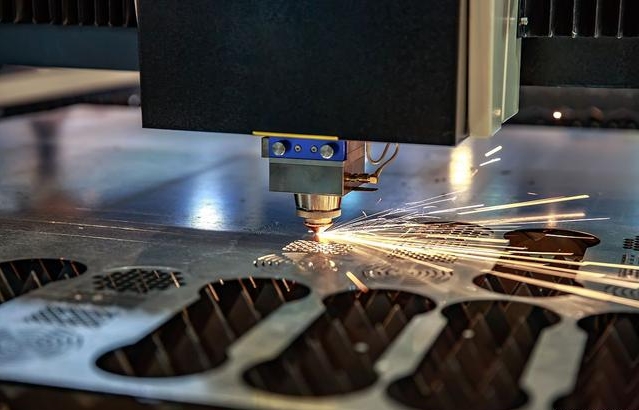Material Innovation: Catalyst for Advancing the Sheet Metal Processing and CNC Industry+ View more
Material Innovation: Catalyst for Advancing the Sheet Metal Processing and CNC Industry
+ View more
Date:2023-11-21 17:00
Introduction:
In the dynamic landscape of sheet metal processing and CNC (Computer Numerical Control), the pivotal role of materials cannot be overstated. This article explores the transformative impact of material innovation, delving into how advancements in materials are shaping the future of the industry. From novel alloys to composites and smart materials, the evolution of materials is propelling sheet metal processing and CNC into new realms of efficiency, durability, and versatility.

1. Advanced Alloys Redefining Strength and Weight Ratios:
Material innovation is reshaping the very foundation of sheet metal processing. The advent of advanced alloys with superior strength-to-weight ratios is revolutionizing the fabrication of components. CNC machines, guided by precise digital models, can now work with materials that offer enhanced durability without compromising on weight, opening avenues for applications in aerospace, automotive, and beyond.
2. Composites for Unprecedented Versatility:
Composite materials, composed of a combination of metals, polymers, and fibres, are redefining versatility in sheet metal processing. CNC machining, with its precision capabilities, is well-suited for working with these composites. The result is components that exhibit a unique blend of strength, lightness, and resistance to corrosion, expanding the scope of applications in industries ranging from construction to renewable energy.
3. Smart Materials for Adaptive Components:
The integration of smart materials into sheet metal processing introduces components with adaptive properties. CNC machines, equipped with precision tooling, can work with smart materials that respond to external stimuli such as temperature, pressure, or electrical signals. This innovation paves the way for the creation of dynamic and responsive components, especially in sectors like healthcare and robotics.
4. Nanostructured Materials for Enhanced Performance:
Material innovation extends to the nanoscale, where nanostructured materials are enhancing the performance of sheet metal components. CNC machining, with its ability to work at high precision, is instrumental in crafting components with nanoscale features. These materials offer improved mechanical properties, thermal conductivity, and corrosion resistance, contributing to heightened efficiency in diverse applications.
5. Biodegradable Materials for Sustainable Manufacturing:
In response to environmental concerns, material innovation in sheet metal processing and CNC is embracing biodegradable materials. CNC machines, driven by precise digital models, can fashion components from materials that are environmentally friendly and degrade naturally over time. This shift aligns with sustainability goals, reducing the ecological footprint of manufacturing processes.
6. Material Simulation for Design Optimization:
The integration of material simulation tools enhances the design phase in sheet metal processing. CAD software, in tandem with CNC machines, can simulate how different materials behave under various conditions. This allows designers and engineers to optimize designs based on material performance, ensuring that components are not only functional but also tailored for specific applications.
7. Lightweight Materials for Fuel Efficiency:
As the automotive and aerospace industries seek improved fuel efficiency, material innovation focuses on lightweight alternatives. CNC machining, driven by CAD precision, is instrumental in working with these materials. Lightweight alloys and advanced polymers contribute to the production of components that reduce overall weight without compromising structural integrity, making significant strides in fuel efficiency.
8. Customizable Materials for Bespoke Solutions:
Material innovation is facilitating the development of customizable materials tailored to specific applications. CNC machines, guided by intricate digital models, can work with materials that are engineered for bespoke solutions. This customization ensures that sheet metal components meet the exact requirements of diverse industries, from medical devices to consumer electronics.
Conclusion:
Material innovation stands as the driving force behind the evolution of sheet metal processing and CNC. As advanced alloys, composites, smart materials, nanostructured options, biodegradable solutions, and other innovations redefine the possibilities, manufacturers are poised to deliver components that are not only technologically advanced but also environmentally conscious. Embracing the synergy between material innovation and CNC precision, the industry is propelling itself into a future where components are lighter, stronger, more adaptable, and customized for diverse applications.
Share to:
Recommend wonderful blog posts

